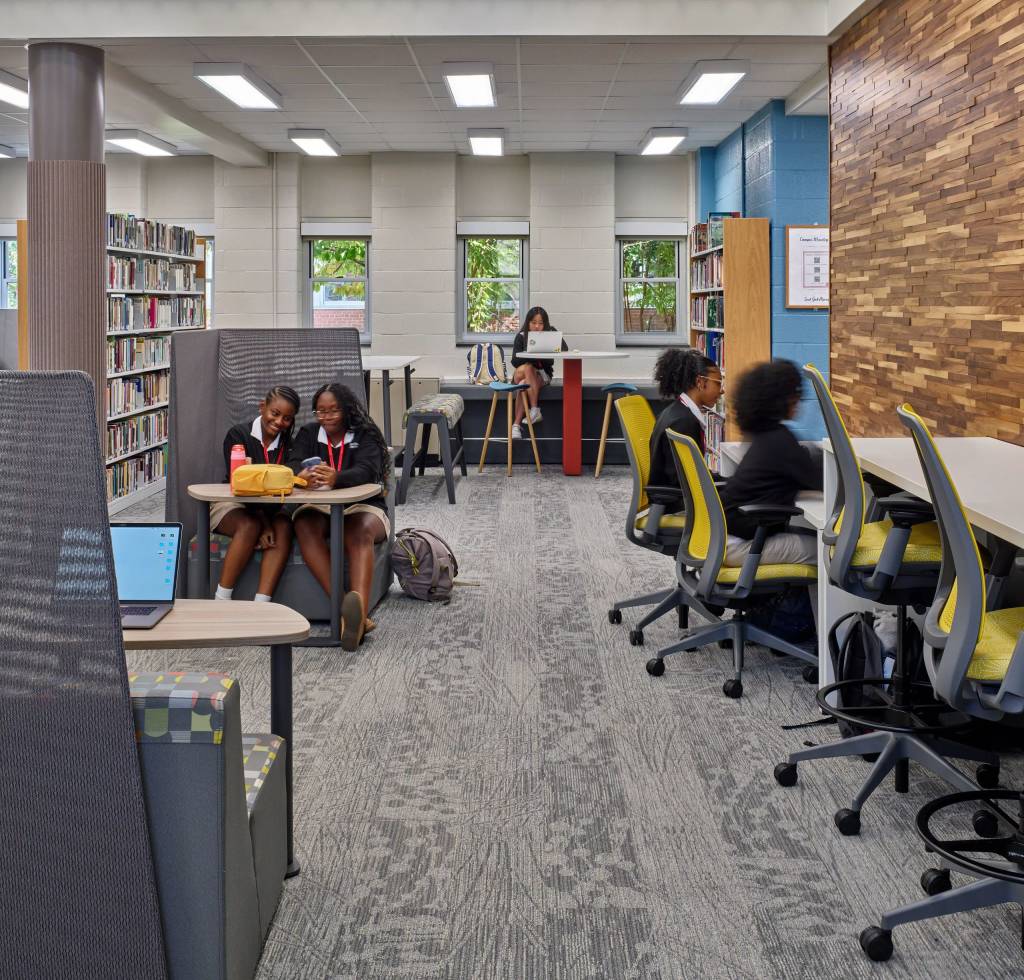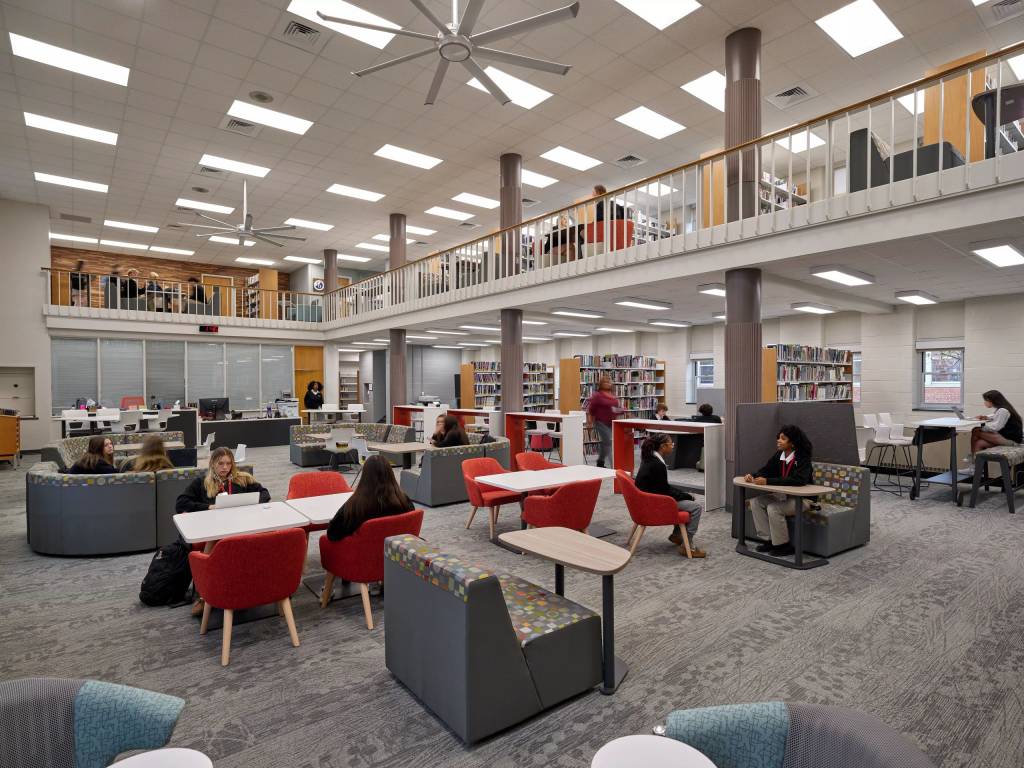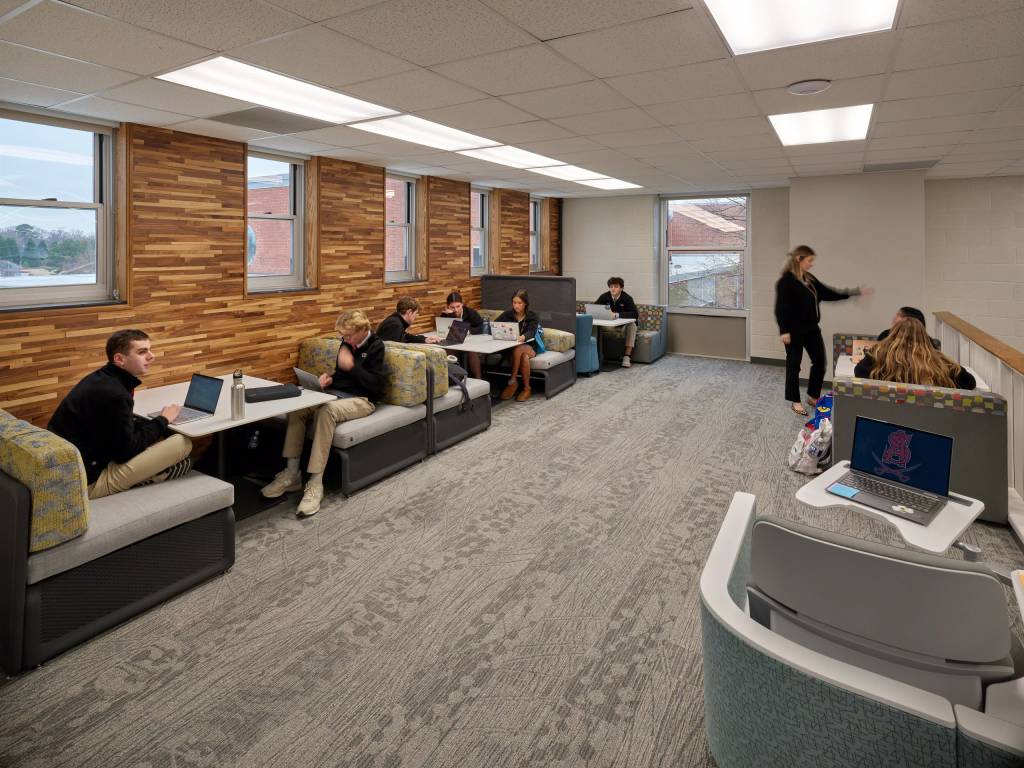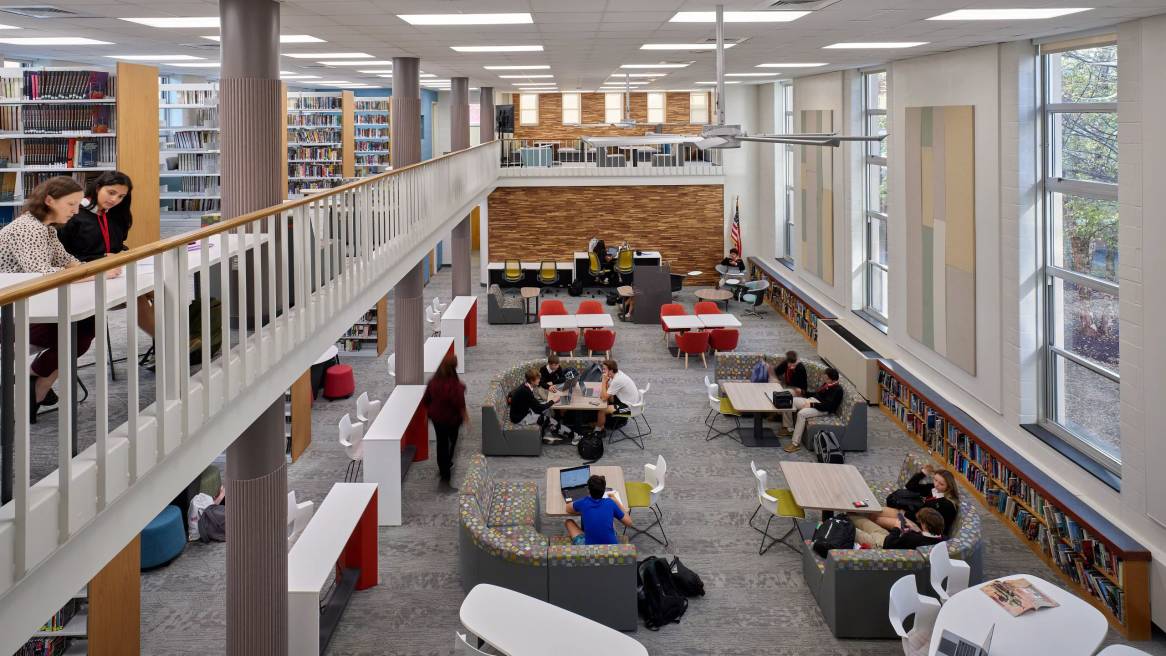From Dated to Dynamic
How a U.S. high school transformed a vastly underused space into one students can’t stay away from.
It just wasn’t the kind of place kids “these days” wanted to go. Built in the 1960s, the Archbishop Spalding High School library was quintessentially classic – a dim, dull place where librarians usually outnumbered students. Outdated and out of the way, the space boasted volumes of books but little else for the nearly 1,300 students it served.
But the Severn, Maryland school’s vision is to transform students who transform the world. With that ethos in mind, school president Brian Kohler made it his mission to remake that secondary space into a first-rate learning commons. What resulted was an environment that was like night and day.
“This project breathed new life, and new light – literally – into our space. It’s transformed our community,” Kohler says. “It’s now a space where students feel welcomed, comfortable and relaxed. Now, students are there from the start of our school day at 7:50 in the morning until 7:50 at night.”
A Place That Feels Like Home
How does one begin to conceptualize the idea of completely transforming a 6,500-square-foot space that hasn’t changed in almost six decades? And to make it a little more challenging, how can you dynamically refresh the space without major architectural changes?
“We wanted to make a place that felt like home,” Kohler says. “That was our goal from the start.”

Photo Credits: Patrick Ross Photography
Working alongside Steelcase and architect Jim Determan with firm Craig Gaulden Davis Architecture, school leaders drafted a vision for the new library design– a modern, central social hub for the entire 52-acre campus – a place where students come to collaborate, study and meet with mentors or peers for group work. It’s even a place where full classes and learning seminars are held periodically. Designed to accommodate various types of learners, flexible furniture supports different modes of learning and fosters face-to-face interaction for one-on-one tutoring or small group work. Finally, warm, biophilic finishes and shades reduce stress, enhance focused learning and create an inclusive, welcoming environment where students feel comfortable staying and learning.
“It’s a caring environment that allows for inclusion and belonging – which serves the wellbeing of the student,” Kohler believes. “This space respects the dignity of the individual while promoting collaborative learning.”

Photo Credits: Patrick Ross Photography
Architect Jim Determan said an interaction with one of the students in the learning commons demonstrated the power of transformation. He was part of a group walking through the space when he noticed a student had turned a chair away from a group table and faced it toward a window – where they sat, quietly reading. When the student was asked why they had turned the chair around, they apologized believing they had done something wrong. But Determan replied that it was a great example of how students should use the space – a customized experience where they can engage in learning any way they want.
“When you change the space, you change the rules of that space,” Determan says. “These students modified their behavior because of the way the space was designed.”
The newly renovated library’s flexibility is not limited to serving as an active study or meeting space – it hosts classes daily, as well as school board meetings, parent association meetings and strategic planning sessions among school leaders.
“That’s when the diversification of the furniture and the space itself really comes into play,” says Kohler. “That’s part of the reason we call it the Learning Commons – because it is so commonly used by such a diverse group of individuals within our community.”

Photo Credits: Patrick Ross Photography
Feedback from the students and their school community has centered around how school leaders can consider updating or renovating other spaces in the same way – from the cafeteria to classrooms. Kohler says they’re exploring the possibilities. “Schools need to be constantly thinking about what’s next for their community.”
Steelcase Learning has been partnering with K-12 schools and higher education institutions to understand how teaching and learning is evolving -and how smarter, more active learning environments can help.
Want to explore more about our latest learning outcomes report, sign up for a virtual tour or read more of our latest research?


